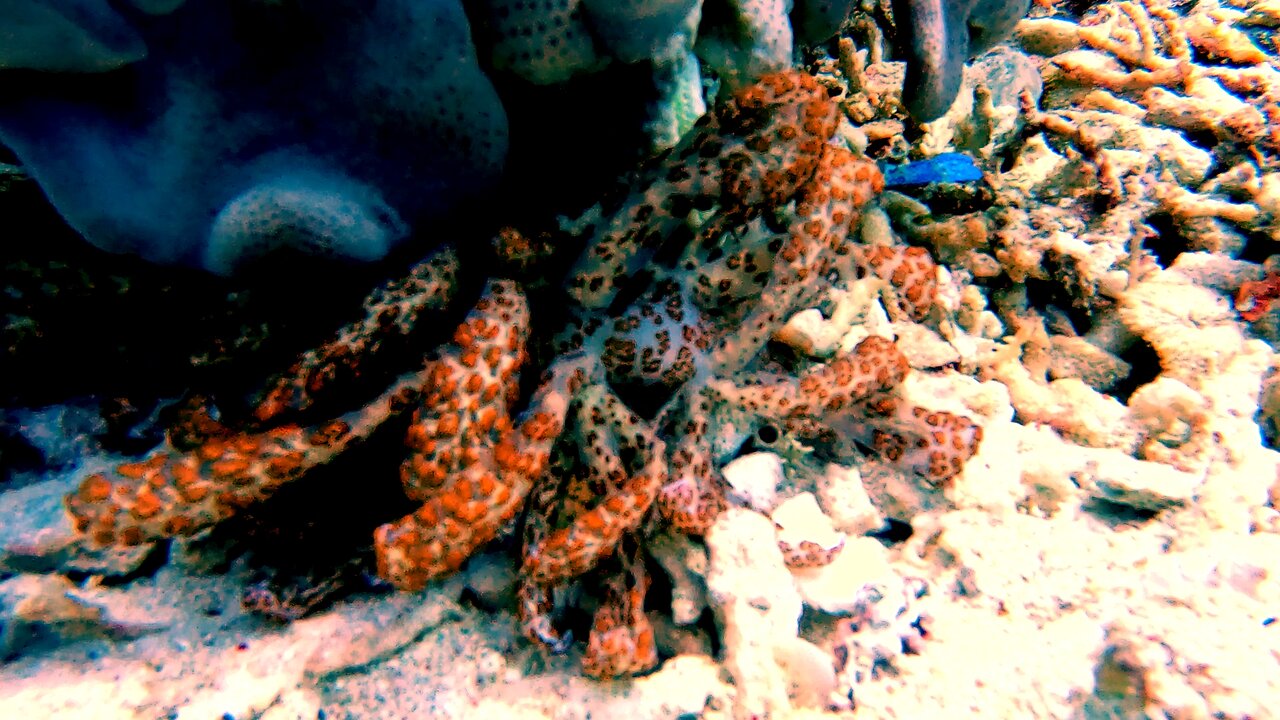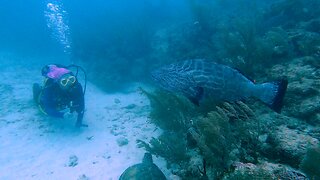Premium Only Content

Solar powered nudibranchs feed in highly unusual way
The solar powered nudibranch (Phyllodesmium longicirrum) is the largest sea slug in the ocean. The large surface area allows it to make use of a feeding technique that is unusual for animals, although most plants use this technique with ease. The solar powered sea slug anchors in light rich areas and waves its appendages to capture energy from the sun. It cannot do this without help though.
Inside the sea slug lives an organism, that performs the photosynthesis using chlorophyll. These little guests are zooxanthellae, single celled organisms that create the yellowish brown colour that we see on the sea slug's exterior. The zooxanthellae are an algae that receive carbon dioxide and the benefit of being positioned well for sun exposure. They would never be so mobile on their own. They also thrive, producing far more food than they need for themselves. The host, the slug in this case, receives energy from the zooxanthellae. The end product is sugar, which powers the sea slug. It's one of the rare cases of true symbiosis in nature. The solar powered sea slug could be mistaken for a plant due to its appearance and the very slow movement. The solar powered sea slug also feeds to a lesser extent on soft corals. This is the manner in which they collect and store the algae. They are able to absorb it intact from the surface of the corals as they feed. Because the algae breed and multiply within the sea slug, it is actually a form of farming. Their large surface areas that are spread out, then function akin to solar panels, benefiting both creatures.
The wonders of nature are limitless. Scuba divers are able to witness animals and plants that are unlike anything that we see on the surface. This one was filmed in Indonesia, near Komodo Island.
-
 1:22
1:22
WildCreatures
1 month ago $0.53 earnedCurious goliath grouper supervises scuba diver filming sea turtle
3.44K6 -
 1:29:26
1:29:26
Glenn Greenwald
14 hours agoICE Detains Permanent Resident for Protesting Israel; European Leaders Make Maniacal Rearmament Vows They Cannot Keep | SYSTEM UPDATE #421
156K292 -
 1:02:56
1:02:56
Donald Trump Jr.
17 hours agoUSAID Slush Fund Slashed, X Cyberattack, Plus Interview with Nate Morris | Triggered Ep.223
149K185 -
 5:48:40
5:48:40
Dr Disrespect
20 hours ago🔴LIVE - DR DISRESPECT - THE SHOTTY BOYS - WARZONE, PUBG, FORTNITE
259K43 -
 2:12:50
2:12:50
Adam Carolla
22 hours agoDouble Murder Convict to be executed by Firing Squad + Comedian Elon Gold + Comedian Carol Leifer
104K22 -
 46:08
46:08
Kimberly Guilfoyle
17 hours agoBad Day to be a Bad Guy: FBI Taking Down World’s Worst Criminals, Live with John Nantz | Ep.203
215K85 -
 DVR
DVR
Redacted News
16 hours agoWhat's REALLY going on in Syria? | Redacted with Natali Morris
211K144 -
 54:18
54:18
Candace Show Podcast
16 hours agoHarvey Speaks: Jessica Mann & The Five Year Affair | Ep 3
232K124 -
 56:53
56:53
Grant Stinchfield
15 hours ago $10.59 earnedFreeze Spending & Kick the Can Down the Road... Why Republicans Should do Just That!
126K25 -
 56:48
56:48
VSiNLive
15 hours agoFollow the Money with Mitch Moss & Pauly Howard | Hour 1
95.8K1